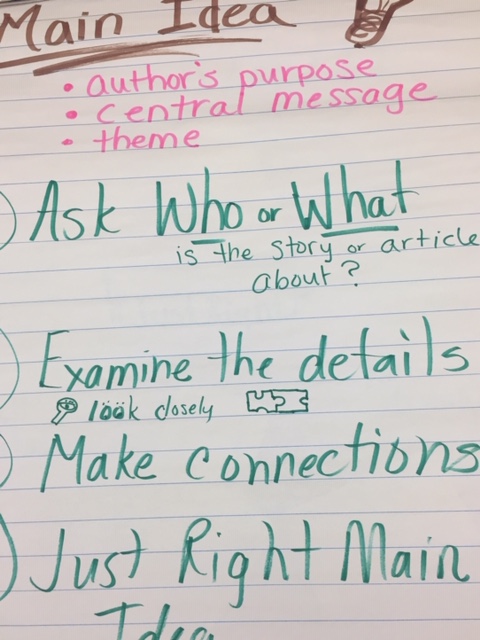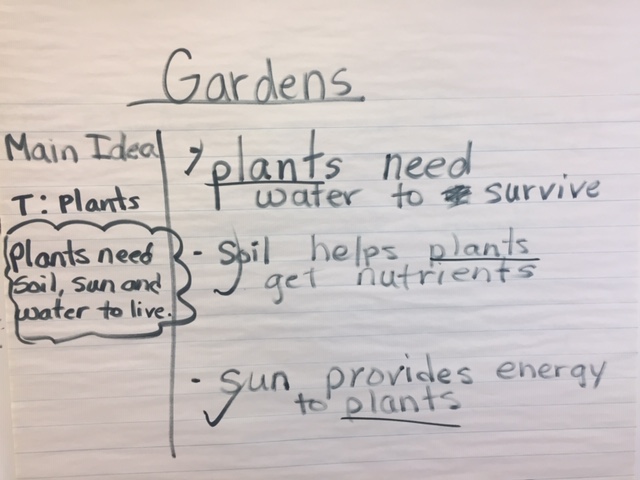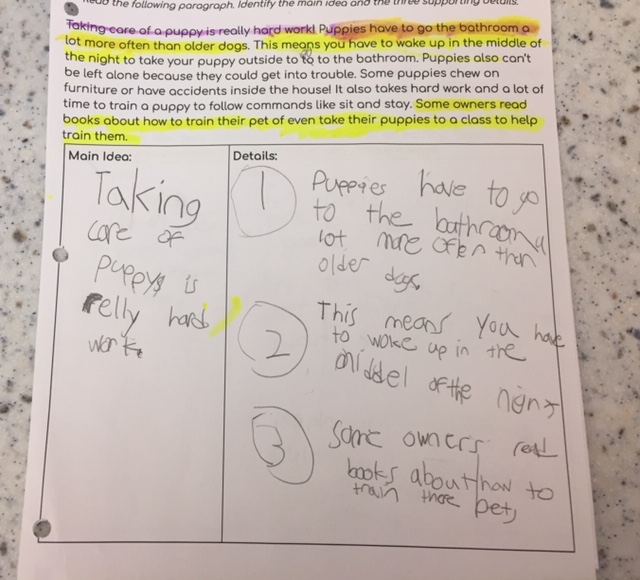Main Idea and Details
Nicole Mondello
Memorial
Prior to KTL training teaching students, finding the main ideas of a passage seemed like one of the most challenging standards to instruct. After all, my attempts at restating main idea as; big idea, most important idea, or ( you know) the thing the whole story is about, just didn’t work. Since thinking about the KTL strategies and how they build a foundation for main idea instruction, it seems easier to peel away the layers and instruct instead of restate or rephrase, Asking students to label a bucket of pictures, then words, and finally sentences laid solid groundwork for decomposing paragraphs.
Second Graders Take on Non Fiction KTL Style March 2019
Second grade students at Memorial School have been sorting and categorizing since kindergarten. Now they have taken this crucial main idea skill to a new level. Utilizing first, the “Labeling the Bucket” strategy we are now using “Goldilocksing” to find the main idea! Students looked carefully at an informational paragraph and sorted the sentences from the paragraph in two ways...details (specific) or main idea statements (a big idea/connecting idea).
First, a lesson sorting sentences into two groups!
Detail about a topic or broad statement about the topic.
Second, a lesson in self-cuing!

Who or what is this mostly about?
Who or what is this mostly about?
The topic: ________
Third, a guided lesson in reading a paragraph and using two- column notes.

Third, a guided lesson in reading a paragraph and using two- column notes.
Students recorded three details about the topic from a paragraph
Finally, finding a “just right” main idea statement.

Finally, finding a “just right” main idea statement.
Students were to identify or write a sentence to convey the main idea.
Thinking partners help determine if the statement was too broad, (like a topic)
or too specific, ( like a detail) or “just right” .
Thinking partners help determine if the statement was too broad, (like a topic)
or too specific, ( like a detail) or “just right” .

No comments:
Post a Comment